ExxonMobil has misled consumers for years by perpetuating a “myth” about plastic recycling, according to a new lawsuit filed by the state of California.
Technology
From Lauri Moore to Vic Singh, venture capitalists continue to play musical chairs

From Keith Rabois to Ethan Kurzweil, a lot of VCs have switched firms or spun out of storied VC institutions to launch their own funds this year. These employment changes are surprising because unlike in many other fields, venture capitalists don’t traditionally move around very much — especially those who reach the partner or general partner level.
VC funds have 10-year life cycles, and partners have good reason to stay that course. In some instances, there may be a “key man” on a firm’s fund, meaning that if they leave, the fund’s LPs have the right to pull their capital out if they choose. Many partners and GPs also have some of their own money invested in their firms’ funds, which gives them further reason to stick around.
So, while big-name investor moves in venture capital aren’t common, they seem to have become so in recent months. So far this year, there have been notable instances of investors returning to old firms, striking out on their own, or taking a pause from investing entirely.
Here’s who we know of so far:
September
- James da Costa announced on September 17 that he was joining Andreessen Horowitz as a partner focused on B2B software and financial services. This marks da Costa’s first foray into venture investing; he was previously the co-founder of Fingo, an African neobank.
- On September 11, Jacob Westphal announced that he was leaving Andreessen Horowitz. Westphal was a partner at a16z for three and a half years. He left to become the portfolio lead at Will Ventures.
August
- Freestyle VC announced on August 15 that Maria Palma had joined the firm as a general partner based in San Francisco. Palma was most recently a general partner at Kindred Capital, based in London. Palma has backed companies such as Moov, Novo, and Lottie.
July
- After nearly seven years, Alex Cook is getting ready to leave Tiger Global, sources familiar with the matter tell TechCrunch. While at Tiger Global, Cook led deals including TradingView, Scalapay and TrueLayer, among others. Prior to Tiger Global, Cook worked at Apollo.
- Bessemer Venture Partners announced it added Lauri Moore as a partner on July 22. Moore was previously a partner at Foundation Capital for two years and an operator at LinkedIn before that. Moore will be focused on early-stage investments in sectors including data, AI and developer tools.
- On July 17, DCVC announced it had brought on Milo Werner as a general partner to lead the firm’s climate investing practice. The firm is currently raising its first dedicated climate fund. Werner was most recently a general partner at Engine Ventures for two and a half years. Werner was a partner at Ajax Strategies prior to that.
- Anne Lee Skates announced on July 11 that she had left Andreessen Horowitz where she had been a partner on the consumer team since 2019. She added that she’s off to do her “life’s work” and will post more about her future plans soon. At Andreessen, she backed companies including Whatnot, Kindred and Prisms, among others.
June
- On June 17, Spencer Peterson announced that he’d left Bedrock, where he served as partner for five years, to become a general partner at Coatue. Peterson is an investor in companies including OpenAI and Rippling, among others.
- Amanda “Robby” Robson announced her departure from Cowboy Ventures in a LinkedIn post in early June. Robson had been at Cowboy Ventures since October 2019 and at Norwest Venture Partners for three years prior to that. Robson plans to launch a fund of her own.
May
- Serena Ventures founding partner Alison Stillman announced she’d stepped back from the firm on May 14 after a nearly six-year run working with tennis star Serena Williams. Stillman did not announce her next step.
- Terri Burns announced on May 13 that she was launching a new venture firm called Type Capital. Burns was previously the first Black woman partner at GV and left the firm back in 2022. Her new fund will focus on pre-seed and seed-stage startups.
- Last week TechCrunch scooped that Fika Ventures co-founder Eva Ho was going to transition out of the firm after Fika finished deploying its current fund. Ho is stepping back for personal reasons. The move was confirmed by the firm in a blog post on May 9.
- On May 9, Alison Lange Engel announced she was taking on the role of CEO at Ceros, an AI-powered design company. Lange Engel left Greycroft in December, where she had been a partner since 2019, to take the role.
- After 15 years, Vic Singh announced on X that he was stepping down from Eniac Ventures on May 1. Singh helped launch the firm in 2009 and is planning to launch a new firm of his own.
April
- On April 30, Ethan Kurzweil announced he was leaving his role as partner at Bessemer Venture Partners after 16 years. Kurzweil will be launching an early-stage-focused investment firm, according to reporting from Axios. Kurzweil will launch the firm with Kristina Shen, who left Andreessen Horowitz after four years on March 29, and Mark Goldberg, who left Index Ventures after eight years last fall.
- On April 1, Christina Farr announced that she’d be leaving OMERS Ventures, where she has served as a principal investor and the lead of the firm’s health tech practice since December 2020. Farr announced on X that she’d be working on her health tech newsletter, writing a book focused on the power that storytelling can have on businesses, and consulting health tech founders.
March
- After six years as a partner at Accel, Ethan Choi announced that he’d be leaving the firm to head to Khosla Ventures in March. Choi will be focused on growth-stage investing at his new firm and has backed such companies as Klaviyo, Pismo and 1Password.
- While many of the recent VC moves have been by folks looking to start something new, or take on a different opportunity, not all of them have been. On March 13, Chamath Palihapitiya’s Social Capital announced that it fired partners Jay Zaveri and Ravi Tanuku. Bloomberg reported that this was due to a matter involving raising money for AI startup Groq.
- Rabois was not the only person looking to boomerang back to an old haunt in this recent rise of investor reshuffling. On March 5, Miles Grimshaw announced that he’d be returning to Thrive Capital as a general partner after serving the same position at Benchmark Capital for three years. Grimshaw originally started at Thrive Capital in 2013 and has backed such companies as Airtable, Lattice, and Monzo, among others.
- While transitioning from operator to VC is a common career progression in the startup ecosystem, it isn’t for everybody. On March 4, Sam Blond announced he had come to that conclusion and would be leaving Founders Fund, where he had been a partner for about 18 months. Blond said he would return to operating and has held roles at companies such as Brex, Zenefits and EchoSign.
January
- After 12 years at Andreessen Horowitz, Connie Chan announced she was leaving the firm on January 23. Chan had served as one of the firm’s general partners the last five years and has backed companies such as Cider, KoBold and Whatnot.
- Famed venture investor Keith Rabois announced on January 9 that he was leaving Founders Fund to return to Khosla Ventures. Rabois had been a general partner at Founders Fund for nearly five years; he returned to Khosla as a managing director, his prior role.
TechCrunch is monitoring the recent venture moves and will continue to update this article as they happen. If you have any tips or callouts to bring to our attention, contact me here: rebecca.szkutak@techcrunch.com.
This post was originally published on May 1. It has since been updated on May 13, July 12, August 15 and September 23 to include additional moves within venture.
This post has been updated to better reflect Anne Lee Skates’ investments at Andreessen Horowitz.
Technology
ExxonMobil deceived the public with plastic recycling, lawsuit claims
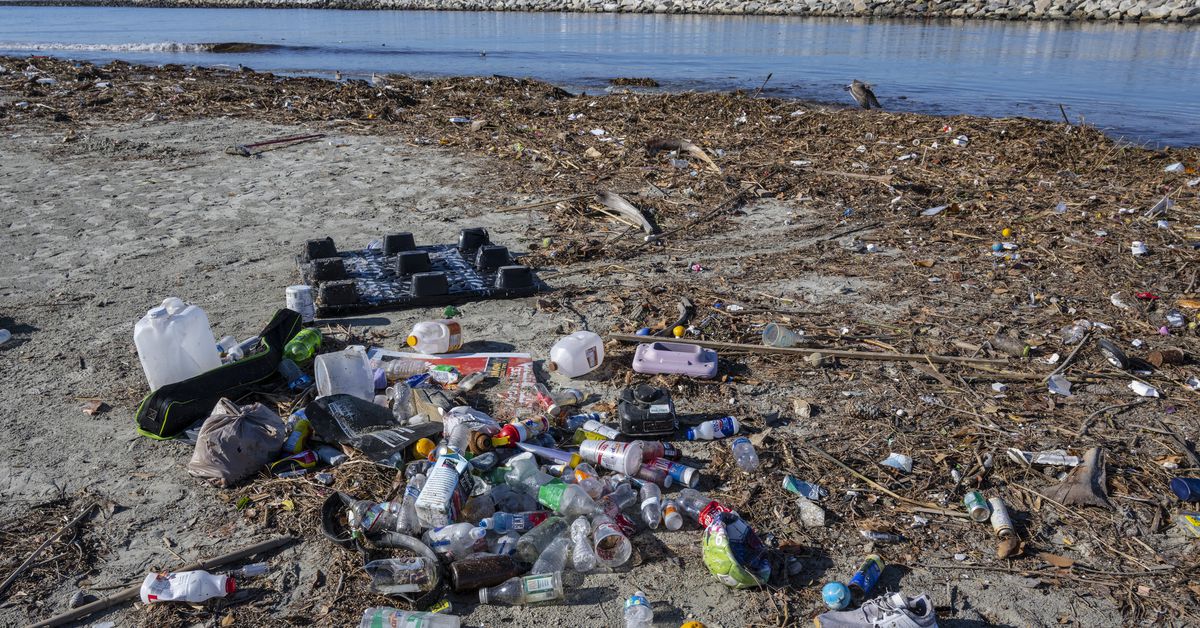
ExxonMobil is the world’s leading producer of single-use plastics that become waste, according to the state attorney general’s office. To encourage people to buy products made with single-use plastics, the suit alleges, ExxonMobil “deceived Californians for almost half a century by promising that recycling could and would solve the ever-growing plastic waste crisis.”
“They clearly knew this wasn’t possible.”
Plastic is quite difficult to reuse, which is why very little of it is ever recycled. Promoting recycling as a cure-all for plastic waste can actually lead to more of it becoming trash, experts warn. Now, the state of California wants to hold industry accountable for the plastic pollution that has accumulated in the environment, animals, and even people’s bodies.
“For decades, ExxonMobil has been deceiving the public to convince us that plastic recycling could solve the plastic waste and pollution crisis when they clearly knew this wasn’t possible,” California Attorney General Rob Bonta said in a press release yesterday.
The AG’s office launched an investigation into the petrochemical industry’s role in creating a plastic “pollution crisis” in 2022. It says it unearthed new documents over the past two years that led the state to file suit this week. The lawsuit alleges that ExxonMobil has violated state public nuisance, natural resources, water pollution, false advertisement, and unfair competition laws through misleading marketing about recycling.
The state is suing for civil penalties and disgorgement, which would force the company to turn over any profits it gained illegally. California also wants to set up an abatement fund and injunctive relief to stop the company from promoting plastics as recyclable the way that it has for years. The attorney general’s office points to a 12-page ad in Time magazine in 1989 on “the urgent need to recycle” as one example of the company’s “campaign of deception.” “Americans have entered an era in which landfilling will no longer be the primary method of garbage disposal,” the ad says.
By 2015, less than 10 percent of plastic waste had ever been recycled. Nearly 80 percent of the 6,300 million metric tons of plastic waste that had been created around the world ended up in landfills or littering the environment.
Even when plastic is rehashed, it’s typically “downcycled” because the quality of the material deteriorates with each use. Plastic bottles are turned into fibers used in carpeting instead of new plastic bottles, for example. And gadgets made with recycled plastic typically have to be reinforced with fresh plastic. It’s often just cheaper for a company to use new plastic rather than recycled materials.
Newer claims from industry about “advanced” or chemical recycling are just as flawed, the attorney general claims, since the majority of plastic waste that goes through that process becomes fuel. The state also claims that plastics produced using ExxonMobil’s “advanced recycling” technology contain such little amounts of used material that “they are effectively virgin plastics.”
ExxonMobil shifted the blame to California in an emailed response to The Verge. “For decades, California officials have known their recycling system isn’t effective. They failed to act, and now they seek to blame others. Instead of suing us, they could have worked with us to fix the problem and keep plastic out of landfills,” the statement says.
One of the selling points for plastic is that it’s lightweight and easy to transport — a characteristic that also makes it easier for plastics to drift into the environment. Once it’s there, it breaks down into tiny particles called microplastics that have flooded the world’s oceans and have been found in everything from seafood to baby poop. Around 21 million pounds of plastic garbage has been collected from California’s beaches and waterways since 1985, according to Bonta’s office.
Plastics are made from fossil fuels and are responsible for 4.5 percent of global greenhouse gas emissions — more than the climate pollution from global shipping.
“While greenwashing certainly isn’t new, the fossil fuel industry in particular has frequently downplayed the impacts that their sector has on climate change,” Cornell University climate and environment legal scholar Leehi Yona said in an emailed statement. “In my view, this latest lawsuit builds on the sustained efforts of many governments to hold fossil fuel companies accountable to the myriad ways they have misled the public on the risks of their products.”
Technology
AI just made a mockery of CAPTCHA and that’s bad news for real people
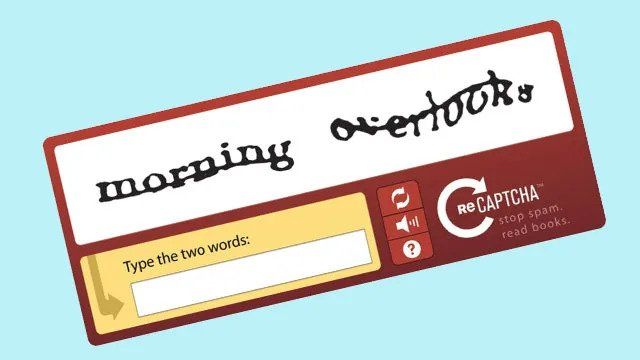
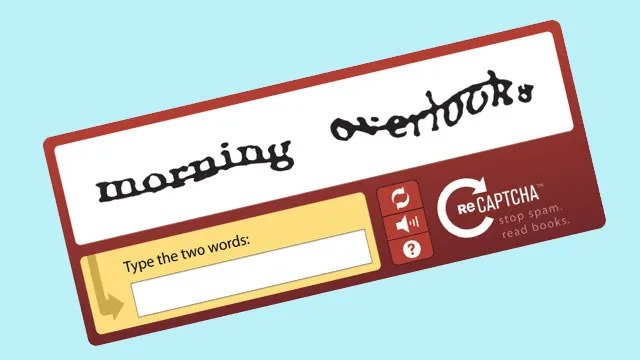
Filling out CAPTCHA puzzles is tedious, but using them as (imperfect) shields against malicious bots made sense, at least until now. Artificial intelligence can now defeat those puzzles every time, according to new research from ETH Zurich. CAPTCHA, an acronym for “Completely Automated Public Turing test to tell Computers and Humans Apart,” is employed across an enormous range of websites.
However, the tool may need renaming based on how well the AI model created by the Swiss researchers solved the security measure’s word and object identification puzzles.
The AI puzzle solver is built on a widely used AI model for processing pictures called You Only Look Once (YOLO). The scientists adjusted YOLO to take on Google‘s popular reCAPTCHAv2 version of CAPTCHA. You’ll immediately recognize reCAPTCAv2 from every time you’ve had to click on a car, bicycle, bridge, or traffic light to prove your humanity.
With 14,000 labeled photos of streets as training data and a little time, however, the scientists could teach YOLO to recognize the objects as well as any human. Exactly as well as a human, in fact, since the AI didn’t solve every puzzle perfectly the first time. But, you may recall how you get more than one chance, assuming you don’t totally mess up the puzzle. YOLO was able to perform well enough that even if it made an error in one puzzle, it would make up for it and succeed with another CAPTCHA puzzle.
Narrowing down the scope of objects users need to identify – often just 13 categories, such as traffic lights, buses, and bicycles – allowed for easier integration across websites.
However, this same focus on a narrow set of object types is what made it easier for the YOLO-based AI model to defeat the system. According to the ETH Zurich team, the system’s simplicity worked to the AI’s advantage, allowing it to master the image-based challenges without much difficulty. Despite attempts to make CAPTCHA more sophisticated by incorporating factors like mouse movement and browser history (known as device fingerprinting), the AI’s success rate remained intact.
The Rise of CAPTCHA-Solving AI
The fact that an AI system can now bypass CAPTCHA systems with a perfect success rate is a wake-up call for the cybersecurity community. CAPTCHA systems are a critical component of web security, designed to prevent bots from engaging in activities like spamming, creating fake accounts, or launching distributed denial-of-service (DDoS) attacks. If these systems are compromised, websites could become more vulnerable to automated attacks and other malicious activities.
The success of the YOLO model in cracking CAPTCHA systems is not an isolated case. In recent years, AI models have demonstrated increasing proficiency in tasks once thought to be exclusive to humans. Solving CAPTCHA puzzles is just the latest milestone in AI advancements that have reshaped expectations around machine learning and automated systems.
Implications for Everyday Users
For the average person, CAPTCHA puzzles are an everyday encounter, whether logging into an online account, submitting a form, or making an online purchase. The security of these interactions hinges on CAPTCHA’s ability to keep bots out. With this latest AI breakthrough, there’s a real risk that CAPTCHA may no longer serve its intended purpose as an effective gatekeeper.
One immediate concern is that if CAPTCHA systems become obsolete or easy for bots to bypass, it could result in an uptick in automated activities such as spam or malicious bot-driven campaigns. For instance, CAPTCHA systems are often employed to prevent bots from creating thousands of fake accounts or automatically posting spammy content across social media platforms. If bots can easily bypass CAPTCHA, it could lead to increased fraudulent activity across websites.
Additionally, as CAPTCHA technology is defeated, websites and service providers will be forced to explore more robust security mechanisms. Some alternatives being discussed include more sophisticated behavioral analysis techniques, such as tracking user interaction patterns, and biometric-based verification systems that rely on fingerprints or facial recognition.
Am I AI?
Proving that you’re not a robot isn’t as easy as it used to be, but that doesn’t mean you have to panic about being replaced any time soon. It’s simply evidence that cybersecurity needs to account for the rapidly evolving capabilities of AI models. CAPTCHA might end up phased out in favor of different puzzles to prove your humanity.
It would have to be more intensive than simply picking the right image. A security setup might have to monitor your behavior in solving a puzzle, like how fast and well you type and scroll. Or it might take a combination of multiple tests and verifications. In other words, cybersecurity will need to be stricter, though hopefully without slowing down web browsing too much. If things get really tough, perhaps we’ll all have to submit a tear after watching Mufasa die in The Lion King.
You might also like
Technology
Smartphone flaw allows hackers and governments to map your home
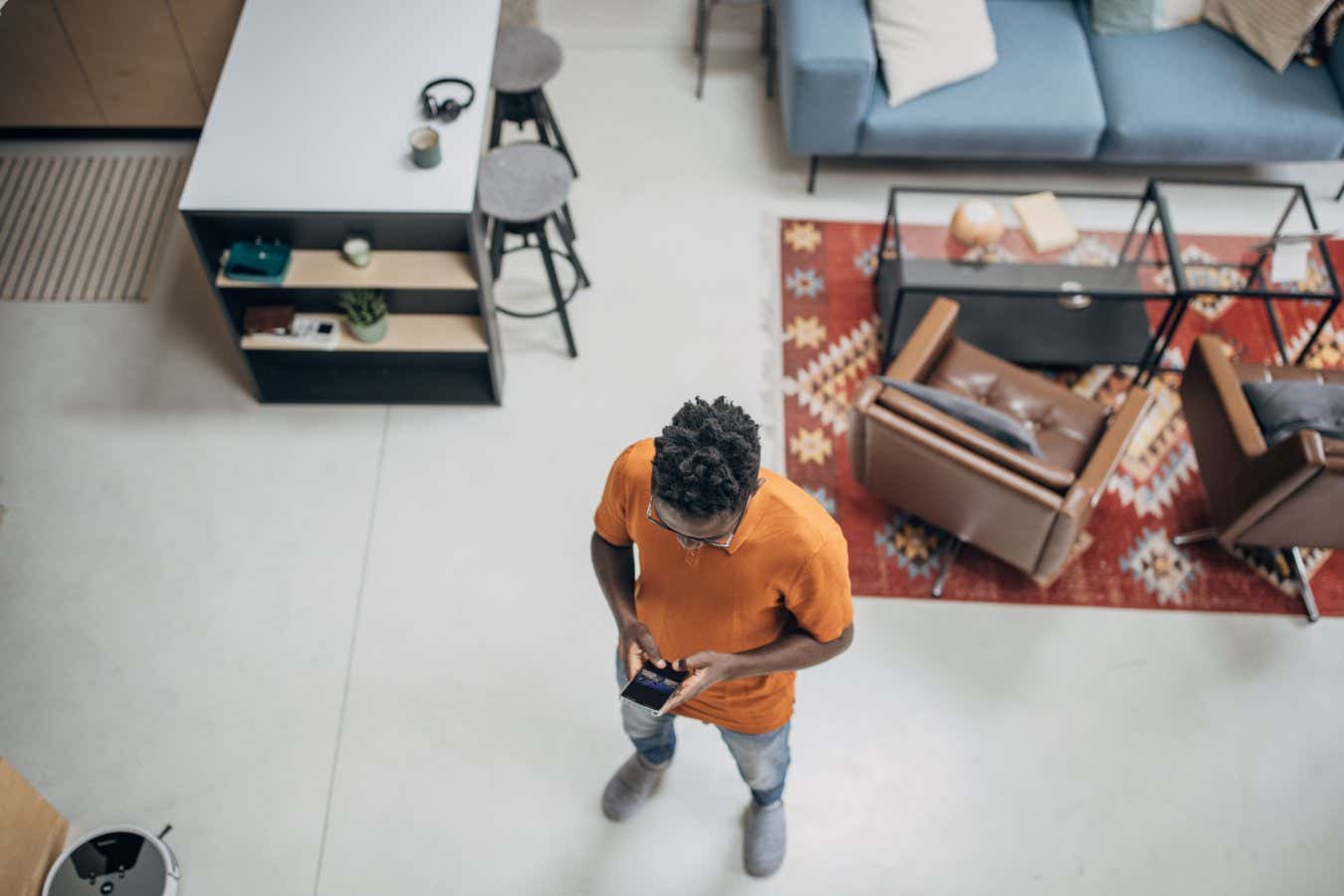

AI can be used to detect where you are and what you are doing from GPS data
South_agency/Getty Images
Hackers, app developers and even government agencies could be using your smartphone to create a map of the room you are in and determine what you are doing. The security vulnerability uses data in the GPS signal and doesn’t require access to data from the camera, microphone or accelerometer.
Soham Nag and Smruti Sarangi at the Indian Institute of Technology Delhi have been researching whether any information other than location could be extracted from GPS signals when Android smartphone…
Technology
How to watch SpaceX’s Crew-9 launch to the ISS
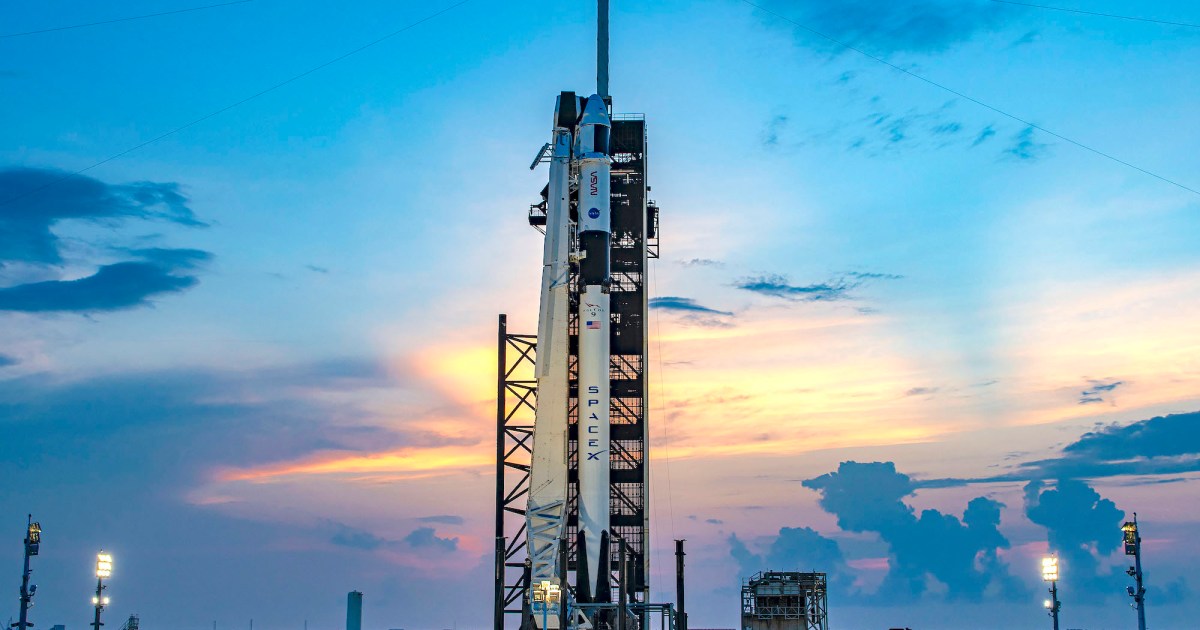

SpaceX and NASA are gearing up for the Crew-9 launch that will carry an American astronaut and a Russian cosmonaut to the International Space Station (ISS) aboard a SpaceX Crew Dragon spacecraft.
A Falcon 9 rocket carrying the capsule and its crew could lift off as early as Thursday, September 26, from the Kennedy Space Center in Florida. However, following a flight readiness review carried out on Monday, NASA officials have noted that the launch could be delayed by a gathering storm.
“NASA, SpaceX, and the U.S. Space Force’s 45th Weather Squadron are closely monitoring potential Tropical Cyclone Nine and its approach toward the Gulf of Mexico and Florida’s west coast ahead of launch,” the space agency said.
Despite this, the Falcon 9 rocket is is still scheduled to roll out to Kennedy’s Space Launch Complex-40 on Tuesday for a static fire and final dress rehearsal in preparation for launch.
The original plan was for NASA astronaut Nick Hague and Roscosmos cosmonaut Aleksandr Gorbunov to fly to the ISS alongside NASA astronauts Zena Cardman and Stephanie Wilson, but Cardman and Wilson were recently removed from the flight as their seats are needed to bring home Suni Williams and Butch Wilmore at the end of the Crew-9 mission in February. Williams and Wilmore were supposed to travel home on Boeing Starliner’s spacecraft, but technical problems with the Starliner prompted NASA to bring the vehicle back to Earth empty, leaving Williams and Wilmore without a ride home.
Crew-9 is the ninth crew rotation mission to the space station with SpaceX under NASA’s Commercial Crew Program. Hague and Gorbunov will spend about five months at the station, conducting experiments, research demonstrations, and spacewalks to perform maintenance on the orbital outpost.
How to watch
NASA is currently targeting 2:05 p.m. ET on Thursday, September 26, for the launch of the Crew-9 mission.
You can watch the build-up to the launch, the liftoff, and the early stages of the ISS-bound flight on NASA’s YouTube channel, which we’ve embedded at the top of this page.
We’ll update here if NASA makes any changes to the launch schedule, but be sure to check its social media channels for the very latest information.
Technology
Apple iPhone 16 Pro vs Google Pixel 9 Pro
Both Apple and Google released compact flagship smartphones recently. Apple’s arrived earlier this month, while Google’s landed in mid-August. We’re here to compare those two phones, the Apple iPhone 16 Pro vs Google Pixel 9 Pro. Not only are both of them compact phones, but they actually have the same display sizes. To make things even more similar, they also have flat sides, and so on. There are a lot of differences between them, though, so there’s plenty to talk about here.
As per usual, we will first list their specifications and will take it from there. Following that, we’ll be comparing their designs, displays, performance, battery life, cameras, and audio output. These two phones are just as powerful as their larger siblings. Neither company decided to cut corners with the smaller flagships this year, which is always nice to see. So… let’s get to it, shall we?
Specs
Apple iPhone 16 Pro vs Google Pixel 9 Pro, respectively
– Screen size:
6.3-inch LTPO Super Retina XDR OLED ( flat, 120Hz, HDR, 2,000 nits max brightness)
6.3-inch QHD+ OLED (120Hz, HDR, 3,000 nits)
– Display resolution:
2622 x 1206
2856 x 1280
– SoC:
Apple A18 Pro (3nm)
Google Tensor G4
– RAM:
8GB
16GB (LPDDR5X)
– Storage:
128GB/256GB/512GB/1TB (NVMe)
128GB/256GB/512GB/1TB (UFS 3.1)
– Rear cameras:
48MP (wide, f/1.8 aperture, 1/1.28-inch sensor, 1.22um pixel size, sensor-shift OIS), 48MP (ultrawide, f/2.2 aperture, 0.7um pixel size, PDAF), 12MP (periscope telephoto, f/2.8 aperture, 1/3.06-inch sensor, 1.12um pixel size, 3D sensor-shift OIS, 5x optical zoom)
50MP (wide, f/1.7 aperture, 1.2um pixel size, OIS, EIS), 48MP (ultrawide, f/1.7 aperture, 123-degree FoV), 48MP (periscope telephoto, f/2.8 aperture, OIS, EIS, 5x optical zoom)
– Front cameras:
12MP (f/1.9 aperture, PDAF, 1/3.6-inch sensor size, OIS)
42MP (f/2.2 aperture)
– Battery:
3,582mAh
4,700mAh
– Charging:
38W wired, 25W MagSafe wireless, 15W Qi2 wireless, 7.5W Qi wireless, 5W reverse wired
27W wired, 21W wireless (Pixel Stand), 12W Qi wireless, 5W reverse wireless (no charger)
– Dimensions:
149.6 x 71.5 x 8.3 mm
152.8 x 72 x 8.5 mm
– Weight:
199 grams
– Connectivity:
5G, LTE, NFC, Wi-Fi, USB Type-C, Bluetooth 5.3
– Security:
Face ID (3D facial scanning)
Ultrasonic in-display fingerprint scanner
– OS:
iOS 18
Android 14
– Price:
$999+
$999+
– Buy:
Apple iPhone 16 Pro
Google Pixel 9 Pro (Best Buy, Google Store)
Apple iPhone 16 Pro vs Google Pixel 9 Pro: Design
Both of these phones are made out of metal and glass. The thing is, the iPhone 16 Pro has a frame made out of titanium, with some aluminum in the mix. The Pixel 9 Pro’s is made out of aluminum. Titanium is the stronger material, but aluminum is better when it comes to heat dissipation. Both phones have flat sides all around, though they do curve a bit towards the very edges, for comfort’s sake. You’ll also notice rounded corners on both smartphones.
The front and back sides on both devices are flat too. The iPhone 16 Pro includes a pill-shaped cutout at the top of the display, the so-called ‘Dynamic Island’. Google’s handset has a display camera hole instead. The bezels are very thin on both of these devices, and they’re also uniform on top of that. On the iPhone 16 Pro, you’ll find the power/lock key and the ‘Camera Control’ buttons on the right-hand side. On the left, the volume rocker buttons are located, and the ‘Action Button’.
The Pixel 9 Pro includes all of its physical keys on the right-hand side. The power/lock button sits there, and below it you’ll find the volume up and down buttons. Apple’s handset has a camera island in the top-left corner of its back, with three cameras in there. Apple’s well-known rear camera design is included here. The Pixel 9 Pro has a pill-shaped camera island at the top, which is centered. That design makes the Pixel 9 Pro sit nicely on the table, without wobbling, unlike the iPhone 16 Pro.
Apple’s handset is a couple of millimeters shorter than the Pixel 9 Pro. It’s also ever so slightly narrower and thinner, but the difference is less than a millimeter. The two smartphones have the exact same weight, they weigh 199 grams. They’re both also IP68 certified for water and dust resistance.
Apple iPhone 16 Pro vs Google Pixel 9 Pro: Display
The iPhone 16 Pro features a 6.3-inch 2622 x 1206 LTPO Super Retina XDR OLED display. That panel is flat, and it offers an adaptive refresh rate of up to 120Hz. HDR content is supported here, and the same goes for Dolby Vision. The peak brightness of this panel is 2,000 nits. The screen-to-body ratio is at around 90%, while the display aspect ratio is 19.5:9. This display is protected by the Ceramic Shield glass.
![]()
Google’s handset, on the other hand, features a 6.3-inch 2856 x 1280 LTPO OLED display. This panel also offers an adaptive refresh rate of up to 120Hz. It supports HDR10+ content, and the peak brightness here is 3,000 nits. The screen-to-body ratio is at around 87%, while the display aspect ratio sits at 20:9. The Gorilla Glass Victus 2 from Corning is included on top of the display here.
Both of these displays are great. They’re bright, vivid, and more than sharp enough. The touch response is good on both panels, and the viewing angles are great. The blacks are also quite deep, as you’d expect out of OLED displays. Neither display offers high-frequency PWM dimming, though, if that’s something you care about. They both do get bright enough for outdoor use but are not the brightest around.
Apple iPhone 16 Pro vs Google Pixel 9 Pro: Performance
The Apple A18 Pro SoC fuels the iPhone 16 Pro. That is Apple’s brand-new flagship processor. It’s a 3nm chip, in case you were wondering. Apple paired that up with 8GB of RAM and NVMe flash storage. The Pixel 9 Pro is fueled by the Google Tensor G4 processor. That is Google’s new 4nm chip. That processor is paired with 16GB of LPDDR5X RAM and UFS 3.1 flash storage. Neither phone offers expandable storage, by the way.
Apple’s chip is more powerful than Google’s, quite a bit more powerful. Google’s processor is adapted for Pixel phones, though, and it’s made with AI tasks in mind. In regular, day-to-day use, both of these smartphones are outstanding. They do everything you need them to without skipping a beat. Browsing, messaging, emailing, image editing, video processing, basically anything you can think of.
What about gaming? Well, the iPhone 16 Pro is the more powerful smartphone here, both in terms of the CPU and the GPU. It can easily run any game you’ll find on the App Store, even the most demanding ones. The Pixel 9 Pro does not have that much CPU and GPU prowess, but it can still run pretty much every game. Even the most demanding ones are playable, but you may not want to play them at the very highest details, as you’ll notice some limitations. Both smartphones do get quite warm during gaming, but not too warm.
Apple iPhone 16 Pro vs Google Pixel 9 Pro: Battery
The iPhone 16 Pro features a 3,582mAh battery. That is not something Apple confirmed, but something that had to be checked once the phones became available. The Pixel 9 Pro, on the other hand, has a 4,700mAh battery on the inside. Android phones usually have larger batteries, so that’s perfectly normal. The thing is, both of these smartphones do offer really, really good battery life, so that’s not something you need to worry about.
At this point in time, we’re still working on our iPhone 16 Pro review, but have been using the phone for a while, and do know what to expect in terms of battery life. Both of these devices can get you through the day, even if you’re using them quite a bit. Getting to over 7 hours of screen-on-time is possible on both smartphones, depending on your usage. Do note that we didn’t really play games on the day we reached such numbers. Your mileage may, of course, vary, as there are many factors involved.
The iPhone 16 Pro supports 38W wired charging, along with 25W MagSafe wireless, 15W Qi2 wireless, and 7.5W Qi wireless charging. On top of that, 5W reverse wired charging is also supported. The Pixel 9 Pro, on the other hand, supports 27W wired, 21W wireless with Pixel Stand, 12W Qi wireless, and 5W reverse wireless charging. Neither of these two phones includes a charger in the retail box, only the charging cable.
Apple iPhone 16 Pro vs Google Pixel 9 Pro: Cameras
You’ll find three cameras on the back of both of these smartphones. A 48-megapixel main camera (1/1.28-inch sensor) sits on the back of the iPhone 16 Pro. It’s backed by a 48-megapixel ultrawide camera, and a 12-megapixel periscope telephoto camera (1/3.06-inch sensor, 5x optical zoom). The Pixel 9 Pro includes a 50-megapixel main camera (1/1.31-inch sensor), a 48-megapixel ultrawide unit (1/2.55-inch sensor, 123-degree FoV), and a 48-megapixel periscope telephoto camera (5x optical zoom).
![]()
Both of these smartphones are very capable in the camera department. The thing is, they do provide considerably different results. The iPhone 16 Pro prefers to offer images that have warmer color temperatures, images that are yellowish. The Pixel 9 Pro does the exact opposite, it prefers cooler tones, so the images do pull more towards the blue side of things. That’s a jarring difference that you’ll notice in many photos compared side-by-side. Google’s handset also loves to offer contrasty photos, while the iPhone 16 Pro tends to brighten up the shadows even during the day.
Both smartphones do a great job of keeping the photos vivid and sharp, though. Their secondary cameras do a good job of keeping the same color profile as their main cameras. We did prefer Google’s telephoto camera, though it was a close call. Both ultrawide cameras did a fantastic job. Both smartphones also do great when it comes to macro photography, though the iPhone 16 Pro left more of a positive experience there. The same goes for video recording.
Audio
You will find a set of stereo speakers on both of these phones. Those speakers are more than loud enough on both phones, and they do offer audio output that is good in terms of quality too… well, for smartphones.
There is no audio jack on either one of these two phones. You can, however, take advantage of the Type-C port that sits on the bottom of both smartphones. If you prefer wireless connectivity instead, Bluetooth 5.3 is supported on both devices.
Technology
How to stream using a VPN on your Google TV or Chromecast
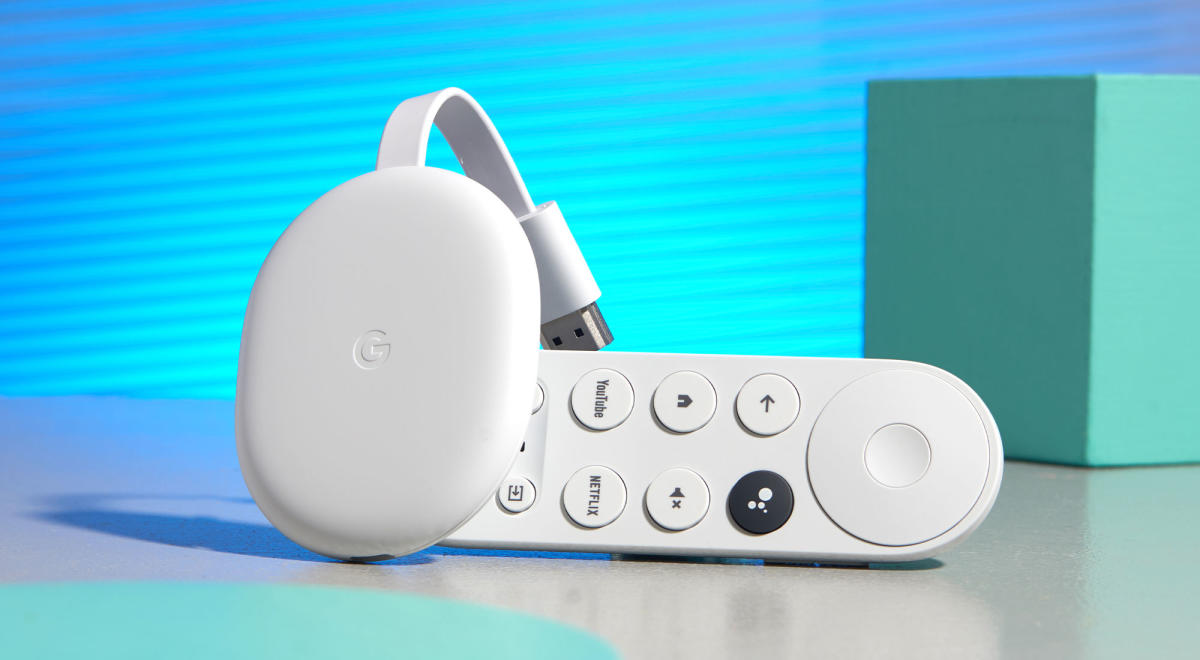
Google TV is an easy to use operating system that provides access to all of the best streaming services in one centralized location. But even if your smart TV runs a different OS, you can get access to Google TV easily by buying a Chromecast for as little as $30, or a new Google TV box for closer to $100. You may also not know that if you use a VPN with your Google TV set or Chromecast, you can access even more content. Here’s how to set up a VPN on Google TV or a Chromecast and why you may want to use one.
Why use a VPN on Google TV or Chromecast?
For streaming purposes, VPNs have one clear benefit: spoofing your IP address to that of a different country so that you can access geo-restricted content. If you use a VPN and connect to a different country’s server, you can access its content library on any streaming platform.
Let’s say you live in the US but want to watch some award-winning BBC documentaries on the BBC iPlayer streaming service. All BBC iPlayer content is free if you live in the UK, but blocked everywhere else. Using a VPN, you can connect to a UK VPN server and stream to your heart’s content.
VPNs also have considerable security benefits if you use them on your smartphone or PC. Purchasing a single subscription means you can use your VPN on any supported device, so we recommend you purchase one for its flexibility.
What VPNs are available on Google TV?
Google TV doesn’t have many apps to install compared to other smart TV systems like Amazon’s Fire TV OS. Although this may seem like a disadvantage, it’s actually a blessing in disguise.
With VPNs, you want to ensure you invest in a quality and trustworthy product. There are many untested or free VPNs available that sell your data or falsify their encryption claims. Although this might not be a huge issue for streaming purposes alone, it generally poses massive security and privacy risks.
When installing a VPN on Google TV or Chromecast, we recommend the following VPN services:
We also have a guide to the best VPNs where we explain why we recommend them.
How to set up a VPN on your Google TV or Chromecast
It’s easy to use a VPN on your Google TV (and perhaps even easier on a Chromecast). Here’s a step-by-step guide on how to install one:
Google TV
-
Navigate to the Google Play Store on your Google TV.
-
Search for the VPN you want to install (alternatively, search for the keyword “VPN” to view your options).
-
Install the VPN.
-
Log in or sign up.
-
Navigate the country server list and connect.
Note that you can use your VPN on as many devices as it supports. So, once you’ve purchased a subscription, it’s wise to download it on as many platforms and devices you can to maximize your investment.
Chromecast
If you have a Chromecast, you can still enjoy the benefits of a VPN — you just need to use your smartphone or laptop in tandem with the streaming device. Here’s how to do it:
-
Install a VPN on your smartphone or laptop.
-
Make sure your Wi-Fi is enabled.
-
Turn on the VPN on your smartphone/laptop.
-
Connect your smartphone or laptop to your TV via Chromecast.
-
Begin streaming your content.
Additional tip: VPNs also work with screencasting. As long as your smart TV is under the same Wi-Fi as the device you’re screencasting from, you can use the VPN securely.
VPN options for other streaming platforms
Don’t have Google TV? Good news: Robust VPN options (or alternatives) exist for the other major streaming platforms, too.
-

 Womens Workouts8 hours ago
Womens Workouts8 hours ago3 Day Full Body Women’s Dumbbell Only Workout
-

 News5 days ago
News5 days agoYou’re a Hypocrite, And So Am I
-

 Sport4 days ago
Sport4 days agoJoshua vs Dubois: Chris Eubank Jr says ‘AJ’ could beat Tyson Fury and any other heavyweight in the world
-

 News2 days ago
News2 days agoOur millionaire neighbour blocks us from using public footpath & screams at us in street.. it’s like living in a WARZONE – WordupNews
-

 Technology6 days ago
Technology6 days agoWould-be reality TV contestants ‘not looking real’
-

 Science & Environment5 days ago
Science & Environment5 days agoHow to unsnarl a tangle of threads, according to physics
-

 Science & Environment5 days ago
Science & Environment5 days ago‘Running of the bulls’ festival crowds move like charged particles
-

 CryptoCurrency4 days ago
CryptoCurrency4 days agoEthereum is a 'contrarian bet' into 2025, says Bitwise exec
-

 CryptoCurrency4 days ago
CryptoCurrency4 days agoDZ Bank partners with Boerse Stuttgart for crypto trading
-
Travel1 day ago
Where Retro Glamour Meets Modern Chic in Athens, Greece
-

 Science & Environment5 days ago
Science & Environment5 days agoWhy this is a golden age for life to thrive across the universe
-

 Science & Environment5 days ago
Science & Environment5 days agoQuantum ‘supersolid’ matter stirred using magnets
-

 Science & Environment5 days ago
Science & Environment5 days agoSunlight-trapping device can generate temperatures over 1000°C
-

 Health & fitness6 days ago
Health & fitness6 days agoThe secret to a six pack – and how to keep your washboard abs in 2022
-

 Science & Environment5 days ago
Science & Environment5 days agoLiquid crystals could improve quantum communication devices
-

 CryptoCurrency4 days ago
CryptoCurrency4 days agoBitcoin miners steamrolled after electricity thefts, exchange ‘closure’ scam: Asia Express
-

 CryptoCurrency4 days ago
CryptoCurrency4 days agoCardano founder to meet Argentina president Javier Milei
-

 CryptoCurrency4 days ago
CryptoCurrency4 days agoDorsey’s ‘marketplace of algorithms’ could fix social media… so why hasn’t it?
-

 CryptoCurrency4 days ago
CryptoCurrency4 days agoLow users, sex predators kill Korean metaverses, 3AC sues Terra: Asia Express
-

 CryptoCurrency4 days ago
CryptoCurrency4 days agoBitcoin bulls target $64K BTC price hurdle as US stocks eye new record
-

 News4 days ago
News4 days agoIsrael strikes Lebanese targets as Hizbollah chief warns of ‘red lines’ crossed
-

 Science & Environment5 days ago
Science & Environment5 days agoHyperelastic gel is one of the stretchiest materials known to science
-

 Science & Environment5 days ago
Science & Environment5 days agoMaxwell’s demon charges quantum batteries inside of a quantum computer
-

 Science & Environment5 days ago
Science & Environment5 days agoQuantum forces used to automatically assemble tiny device
-

 News4 days ago
News4 days agoBrian Tyree Henry on voicing young Megatron, his love for villain roles
-

 Science & Environment5 days ago
Science & Environment5 days agoITER: Is the world’s biggest fusion experiment dead after new delay to 2035?
-

 Science & Environment5 days ago
Science & Environment5 days agoHow to wrap your mind around the real multiverse
-

 Science & Environment5 days ago
Science & Environment5 days agoPhysicists are grappling with their own reproducibility crisis
-

 Science & Environment5 days ago
Science & Environment5 days agoNuclear fusion experiment overcomes two key operating hurdles
-

 CryptoCurrency4 days ago
CryptoCurrency4 days agoRedStone integrates first oracle price feeds on TON blockchain
-

 CryptoCurrency4 days ago
CryptoCurrency4 days agoSEC asks court for four months to produce documents for Coinbase
-

 CryptoCurrency4 days ago
CryptoCurrency4 days agoVitalik tells Ethereum L2s ‘Stage 1 or GTFO’ — Who makes the cut?
-

 CryptoCurrency4 days ago
CryptoCurrency4 days agoBlockdaemon mulls 2026 IPO: Report
-

 Womens Workouts3 days ago
Womens Workouts3 days agoBest Exercises if You Want to Build a Great Physique
-

 Womens Workouts3 days ago
Womens Workouts3 days agoEverything a Beginner Needs to Know About Squatting
-

 Science & Environment1 day ago
Science & Environment1 day agoMeet the world's first female male model | 7.30
-

 Sport4 days ago
Sport4 days agoUFC Edmonton fight card revealed, including Brandon Moreno vs. Amir Albazi headliner
-

 Technology4 days ago
Technology4 days agoiPhone 15 Pro Max Camera Review: Depth and Reach
-

 Science & Environment5 days ago
Science & Environment5 days agoHow one theory ties together everything we know about the universe
-

 Science & Environment5 days ago
Science & Environment5 days agoLaser helps turn an electron into a coil of mass and charge
-

 Science & Environment5 days ago
Science & Environment5 days agoQuantum time travel: The experiment to ‘send a particle into the past’
-

 CryptoCurrency4 days ago
CryptoCurrency4 days ago2 auditors miss $27M Penpie flaw, Pythia’s ‘claim rewards’ bug: Crypto-Sec
-

 CryptoCurrency4 days ago
CryptoCurrency4 days agoJourneys: Robby Yung on Animoca’s Web3 investments, TON and the Mocaverse
-

 CryptoCurrency4 days ago
CryptoCurrency4 days ago$12.1M fraud suspect with ‘new face’ arrested, crypto scam boiler rooms busted: Asia Express
-

 Science & Environment5 days ago
Science & Environment5 days agoFuture of fusion: How the UK’s JET reactor paved the way for ITER
-

 CryptoCurrency4 days ago
CryptoCurrency4 days agoCertiK Ventures discloses $45M investment plan to boost Web3
-

 CryptoCurrency4 days ago
CryptoCurrency4 days agoVonMises bought 60 CryptoPunks in a month before the price spiked: NFT Collector
-

 CryptoCurrency4 days ago
CryptoCurrency4 days ago‘Silly’ to shade Ethereum, the ‘Microsoft of blockchains’ — Bitwise exec
-

 CryptoCurrency4 days ago
CryptoCurrency4 days ago‘No matter how bad it gets, there’s a lot going on with NFTs’: 24 Hours of Art, NFT Creator
-
Business4 days ago
How Labour donor’s largesse tarnished government’s squeaky clean image
-

 News4 days ago
News4 days agoBrian Tyree Henry on voicing young Megatron, his love for villain roles
-

 CryptoCurrency4 days ago
CryptoCurrency4 days agoCoinbase’s cbBTC surges to third-largest wrapped BTC token in just one week
-

 News3 days ago
News3 days agoBangladesh Holds the World Accountable to Secure Climate Justice
-

 News4 days ago
News4 days agoChurch same-sex split affecting bishop appointments
-

 Politics6 days ago
Politics6 days agoTrump says he will meet with Indian Prime Minister Narendra Modi next week
-

 Technology4 days ago
Technology4 days agoFivetran targets data security by adding Hybrid Deployment
-

 Politics4 days ago
Politics4 days agoLabour MP urges UK government to nationalise Grangemouth refinery
-

 Science & Environment6 days ago
Science & Environment6 days agoTime travel sci-fi novel is a rip-roaringly good thought experiment
-

 CryptoCurrency4 days ago
CryptoCurrency4 days agoHelp! My parents are addicted to Pi Network crypto tapper
-

 CryptoCurrency4 days ago
CryptoCurrency4 days agoCrypto scammers orchestrate massive hack on X but barely made $8K
-

 Science & Environment5 days ago
Science & Environment5 days agoWhy we need to invoke philosophy to judge bizarre concepts in science
-

 Science & Environment4 days ago
Science & Environment4 days agoHow do you recycle a nuclear fusion reactor? We’re about to find out
-

 CryptoCurrency4 days ago
CryptoCurrency4 days agoSEC sues ‘fake’ crypto exchanges in first action on pig butchering scams
-

 CryptoCurrency4 days ago
CryptoCurrency4 days agoElon Musk is worth 100K followers: Yat Siu, X Hall of Flame
-

 CryptoCurrency4 days ago
CryptoCurrency4 days agoBitcoin price hits $62.6K as Fed 'crisis' move sparks US stocks warning
-

 CryptoCurrency4 days ago
CryptoCurrency4 days agoCZ and Binance face new lawsuit, RFK Jr suspends campaign, and more: Hodler’s Digest Aug. 18 – 24
-

 CryptoCurrency4 days ago
CryptoCurrency4 days agoTelegram bot Banana Gun’s users drained of over $1.9M
-

 CryptoCurrency4 days ago
CryptoCurrency4 days agoEthereum falls to new 42-month low vs. Bitcoin — Bottom or more pain ahead?
-

 CryptoCurrency4 days ago
CryptoCurrency4 days agoETH falls 6% amid Trump assassination attempt, looming rate cuts, ‘FUD’ wave
-
Politics4 days ago
‘Appalling’ rows over Sue Gray must stop, senior ministers say | Sue Gray
-

 CryptoCurrency4 days ago
CryptoCurrency4 days agoBitcoin options markets reduce risk hedges — Are new range highs in sight?
-

 Money4 days ago
Money4 days agoBritain’s ultra-wealthy exit ahead of proposed non-dom tax changes
-

 News2 days ago
News2 days agoWhy Is Everyone Excited About These Smart Insoles?
-

 News1 day ago
News1 day agoFour dead & 18 injured in horror mass shooting with victims ‘caught in crossfire’ as cops hunt multiple gunmen
-

 News4 days ago
News4 days agoPolice chief says Daniel Greenwood 'used rank to pursue junior officer'
-

 Money5 days ago
Money5 days agoWhat estate agents get up to in your home – and how they’re being caught
-

 Technology7 days ago
Technology7 days ago‘The dark web in your pocket’
-

 Business7 days ago
Business7 days agoGuardian in talks to sell world’s oldest Sunday paper
-

 Science & Environment5 days ago
Science & Environment5 days agoHow to wrap your head around the most mind-bending theories of reality
-

 Technology6 days ago
Technology6 days agoCan technology fix the ‘broken’ concert ticketing system?
-

 Fashion Models4 days ago
Fashion Models4 days ago“Playmate of the Year” magazine covers of Playboy from 1971–1980
-

 News1 week ago
News1 week agoDid the Pandemic Break Our Brains?
-
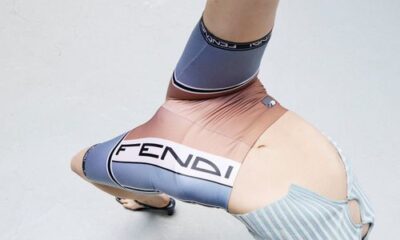
 Fashion Models4 days ago
Fashion Models4 days agoAchtung Magazine
-

 Politics6 days ago
Politics6 days agoTrump Media breached ARC Global share agreement, judge rules
-

 Science & Environment5 days ago
Science & Environment5 days agoA new kind of experiment at the Large Hadron Collider could unravel quantum reality
-

 Fashion Models4 days ago
Fashion Models4 days agoMixte
-

 Science & Environment5 days ago
Science & Environment5 days agoHow Peter Higgs revealed the forces that hold the universe together
-

 News5 days ago
News5 days ago▶️ Media Bias: How They Spin Attack on Hezbollah and Ignore the Reality
-

 Science & Environment5 days ago
Science & Environment5 days agoTake a look behind the scenes at the world’s largest fusion experiment
-

 News5 days ago
News5 days agoRoad rage suspects in custody after gunshots, drivers ramming vehicles near Boise
-

 Health & fitness6 days ago
Health & fitness6 days agoWhen Britons need GoFundMe to pay for surgery, it’s clear the NHS backlog is a political time bomb
-

 Science & Environment6 days ago
Science & Environment6 days agoNerve fibres in the brain could generate quantum entanglement
-
Business6 days ago
Glasgow to host scaled-back Commonwealth Games in 2026
-

 Science & Environment5 days ago
Science & Environment5 days agoX-ray laser fires most powerful pulse ever recorded
-
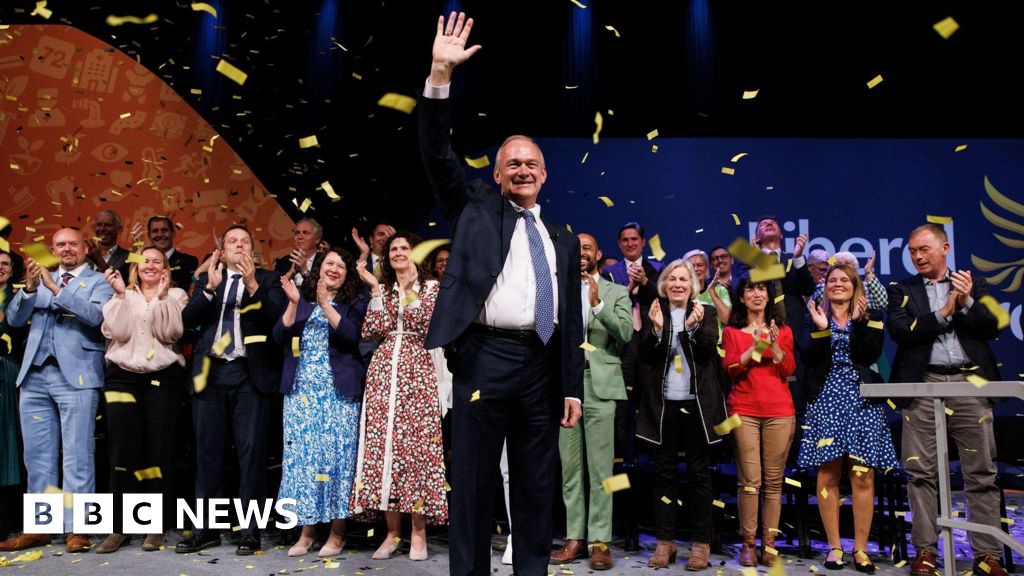
 Politics6 days ago
Politics6 days agoLib Dems aim to turn election success into influence
-

 CryptoCurrency4 days ago
CryptoCurrency4 days agoReal-world asset tokenization is the crypto killer app — Polygon exec
-

 Science & Environment5 days ago
Science & Environment5 days agoUK spurns European invitation to join ITER nuclear fusion project
-

 Science & Environment5 days ago
Science & Environment5 days ago‘Sound laser’ is the most powerful ever made
-

 Science & Environment5 days ago
Science & Environment5 days agoA tale of two mysteries: ghostly neutrinos and the proton decay puzzle
-

 CryptoCurrency4 days ago
CryptoCurrency4 days agoDecentraland X account hacked, phishing scam targets MANA airdrop

You must be logged in to post a comment Login